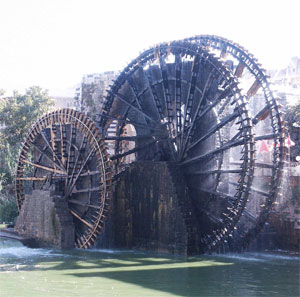Water Supply and Management in the Near East 63BC-AD636: PhD Thesis, University of Oxford (2006)
Zena Kamash, 2009. https://doi.org/10.5284/1000172. How to cite using this DOI
Data copyright © Dr Zena Kamash unless otherwise stated
This work is licensed under the ADS Terms of Use and Access.
Primary contact
Dr
Zena
Kamash
Institute of Archaeology
University of Oxford
36 Beaumont St
Oxford
OX1 2PG
England
Resource identifiers
- ADS Collection: 907
- DOI:https://doi.org/10.5284/1000172
- How to cite using this DOI
Abstract

The aim of this thesis is to assess the ancient systems of water supply and management in the Near East from 63 BC to AD 636, from both a technological and sociological perspective. Some of the main themes to be discussed are of direct relevance to water supply studies such as the debate over productive rural aqueducts versus consumptive urban aqueducts and the constant-offtake principle.
This analysis considers differences and similarities between the pre-Roman period and the period between 63 BC - AD 636 as well as between the Roman and late Roman periods. There were limited technological improvements in water management techniques, mostly related to dams, water-lifting techniques and the introduction of the arch to aqueducts. It would seem that Herod was a key agent of transmission of arcade technology, which suggests that his Romanophile tendencies extended into the realm of water supply. The main trend in the late Roman period was an intensification of previous Roman and pre-Roman practices, in which process the Church and the late Roman army were influential agents.
This work also investigates whether all areas of the East used the same methods of water management and if not, what caused these differences: landscape, climate and geology or culture? On a wider scale, how water management in the East fitted into the Empire as a whole is looked at with a similar set of questions. In some cases, such as the selection of irrigation channels from rivers or qanats from aquifers for irrigation, landscape was the over-riding deciding factor. In other cases, particularly in the use of latrines, religious and cultural identities seemed to have been the governing factor. This suggests that identity, individual or group, and perceived changes to that identity, may have a significant impact on choices of water supply and management.
Chapters 1 and 2 provide geographical background and an overview of the pre-Roman water technologies of the Near East. Chapters 3-10, which are accompanied by gazetteers in volume III, investigate types of water management techniques or installations (water-lifting, dams, irrigation and aqueducts) or zones of water supply and management (in towns and cities, in bathhouses and latrines, in the domestic sphere and in industrial processes). Chapter 11 presents the conclusions of the thesis, synthesising the key themes identified above (and expanded in the Introduction).
Volume I contains the text, volume II the illustrations and volume III the gazetteers.





